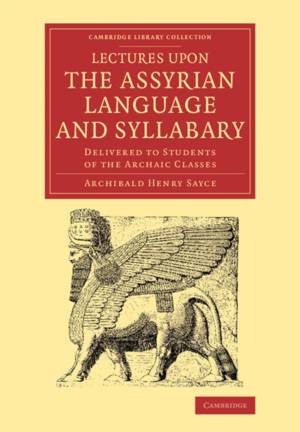
- Afhalen na 1 uur in een winkel met voorraad
- Gratis thuislevering in België vanaf € 30
- Ruim aanbod met 7 miljoen producten
- Afhalen na 1 uur in een winkel met voorraad
- Gratis thuislevering in België vanaf € 30
- Ruim aanbod met 7 miljoen producten
Zoeken
Lectures Upon the Assyrian Language and Syllabary
Delivered to Students of the Archaic Classes
Archibald Henry Sayce
€ 61,45
+ 122 punten
Omschrijving
Archibald Henry Sayce (1845-1933) became interested in Middle Eastern languages and scripts while still a teenager. Old Persian and Akkadian cuneiform had recently been deciphered, and popular enthusiasm for these discoveries was running high when Sayce began his academic career at Oxford in 1869. He had already published two grammars of Assyrian (both reissued in this series) by the time these lively and engaging lectures, given in 1875 and 1876, were published in 1877. The introduction expresses optimism that Assyrian and Egyptian would establish themselves as core components of the university curriculum alongside Greek and Hebrew. Acknowledging the 'repellent difficulties' of learning the Assyrian syllabary, Sayce devotes three lectures to discussing the building blocks of this ancient mode of writing. He then addresses the phonology, pronouns, verbs and syntax of the language. The last of his nine lectures considers the place of Assyrian within the Semitic language family.
Specificaties
Betrokkenen
- Auteur(s):
- Uitgeverij:
Inhoud
- Aantal bladzijden:
- 172
- Taal:
- Engels
- Reeks:
Eigenschappen
- Productcode (EAN):
- 9781108077750
- Verschijningsdatum:
- 30/10/2014
- Uitvoering:
- Paperback
- Formaat:
- Trade paperback (VS)
- Afmetingen:
- 170 mm x 244 mm
- Gewicht:
- 281 g

Alleen bij Standaard Boekhandel
+ 122 punten op je klantenkaart van Standaard Boekhandel
Beoordelingen
We publiceren alleen reviews die voldoen aan de voorwaarden voor reviews. Bekijk onze voorwaarden voor reviews.











